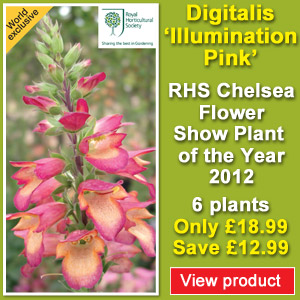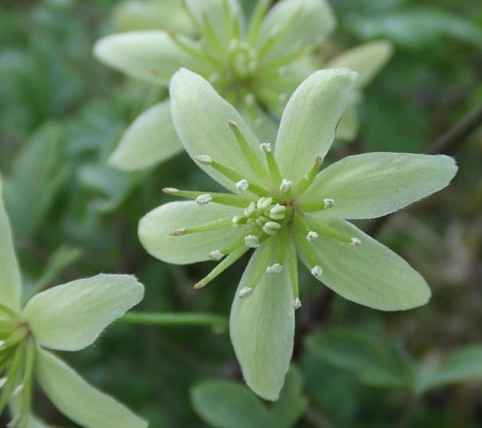|
Archive for June, 2012
Thursday, June 14th, 2012
Got pallets? Want to make raised beds?
Very simple instructions to follow
Photos of them in action here
Filed: allotment
Thursday, June 14th, 2012
How to make Comfrey potting mixture.
How to do this?
Can’t find definitive instructions – but suspect you could either:
Take lots of comfrey leaves and mix with autumn leaves. Store in a black sack or leaf container until a fine compost is obtained.
Or
Take well rotted leaf compost and add comfrey leaves to it for a couple of weeks until they have rotted down. This would add lots of plant food to the material.
Or
Shred comfrey leaves and normal leaves and leave to rot. This process will help the leaves break down fast. It is often suggested to mow leaves up from a lawn which mixes them with grass cuttings which speed up the composting process.
I will be experimenting with this as soon as my comfrey plants are strong enough next year to give me a harvest!
Filed: General Gardening
Thursday, June 14th, 2012
If you have conifers you want to get rid of then you can either send them off in your council’s green waste bins or try to compost them at home. The branches are tough and take a long time to rot down. If you have a quiet corner to use then try to shred them as finely as possible and make a compost heap. If you don’t then you can burn them but they will burn brightly. They will make an acidic compost – but that can be useful if you want to grow things like blueberries.
A long lasting mulch of shredded conifer material could be used on paths. It’s acidic nature will suppress weed growth in theory so could be very effective!
Filed: General Gardening
Thursday, June 14th, 2012
Confrey is a garden essential.
Comfrey – 1 packet (30 seeds)
£2.29
Comfrey ‘Bocking 14’ – 5 root cuttings
£6.99
Comfrey Pellets – 1 litre bag – 600 gms
£12.99
Available in 3 different ways from Thompson and Morgan.
Seeds, roots and pellets.
The pellets are ready to use. The roots should be potted up and then put out in the garden when they’ve started shooting up leaves.
The seeds need growing as per the instructions. Germination rate was about the same in propogator as greenhouse. Small seedlings need slug protection but older plants are too furry for them to nibble.
How much comfrey? As much as you can squeeze in! You’ll use it if you grow potatoes, tomatoes especially and if you want a general plant food then it’s great!
Why is comfrey such a great plant?
It has very long roots that go deep into the ground and bring up nutrients which it stores in it’s leaves. By using the leaves you access the nutrients.
It can be put in any shadey corners too – as it’s happy in sun or semi shade, dappled shade.
Filed: Thompson and Morgan
Wednesday, June 13th, 2012
 
Comes highly recommended for anyone interested in finding out more about keeping bees.
Guide to Bees & Honey: The World’s Best Selling Guide to Beekeeping
This is the ideal guide for anyone wanting to start beekeeping and a revered reference book for experienced beekeepers. It includes information on all you need to know, including how to avoid swarms, plan requeening, or provide the colony with winter stores. It features key information on Varroa. It is copiously illustrated throughout. Fully revised and updated, this new edition of ‘Guide to Bees and Honey’ also presents expert advice for readers who plan to maintain a few hives for personal recreational use, as well as those who want to expand an existing colony into a commercial venture.
For the latest information on Varroa visit the gov website
Another bee book is by local author Paul Peacock! Keeping Bees: A Complete Practical Guide
More popular than ever, beekeeping is a fascinating craft that is fun to learn and the perfect antidote to the stress of modern life. This practical guide covers everything a new beekeeper needs to know, from buying equipment to harvesting your very own honey. With clear, step-by-step instructions on handling and checking your bees, helpful tips and advice on keeping them healthy and productive and also featuring a collection of tempting honey-based recipes for you to try, “Keeping Bees” contains everything a modern beekeeper should know.
Filed: Amazon
Wednesday, June 13th, 2012
The weather this year has been really bizarre with hot, wet, cold, wet, hot, wet, cold weather almost constantly cycling through. It is driving plants mad but the weeds are thriving. A few people have also been saying to me how well the slugs and snails are doing this year.
Is it time to start thinking about autumn planting? If your summer crops aren’t doing so well, cheer yourself up by starting to plant what you can plant in the Autumn and we’ll all hope for better weather.
Broad beans and garlic are two vegetables that spring to mind instantly when you say autumn planting. A friend on our allotment site planted his broad beans in the autumn and he is picking his already. Mine are just flowering and starting to form – so as well as keeping the ground occupied, it also means an earlier crop!
You can also plant overwintering onions and shallots.
Of course the weather could cheer up and the summer veggies could take off, give us a good crop and make us busy right up until it’s time to put away the spade for winter!
Filed: Thompson and Morgan
Wednesday, June 13th, 2012
 Foxglove ‘Illumination Pink’ Foxglove ‘Illumination Pink’
Digitalis
Parentage from the little-known Isoplexis (Canary Island Foxglove) gives this exciting new Digitalis its fabulous tropical colouring. Being completely sterile Foxglove ‘Illumination’ won’t set seed, giving it an incredibly long flowering period. Unlike most foxgloves which are generally biennial, this hardy semi-evergreen is a true perennial so you will be able to enjoy its flowers for years to come. The exotic looking blooms are densely packed on sturdy stems, with many side branches, making a striking addition to summer borders. Height: 90cm (36″). Spread: 45cm (18″).
RHS Chelsea Flower Show Plant of the Year 2012
NEW in 2012 & WORLD EXCLUSIVE
Rare perennial foxglove
T&M’s own breeding
Where to plant foxgloves?
They’re happy in shade, dappled shade under trees is a great place to put them. They’ll love quiet corners of your garden where they can stand tall for years. This plant will reach about 90cm which makes it ideal for the back of a border.
It’s a beautiful plant and one you’ll love seeing in your garden year on year. The bees will love it too.
Filed: Thompson and Morgan
Thursday, June 7th, 2012
Doing well.
 Peas
Filed: allotment
Friday, June 1st, 2012
 Clematis Oberon Clematis Oberong(74608)a(1658606))
Position: full sun or partial shade
Soil: fertile, moist, well-drained soil
Rate of growth: average
Flowering period: March – April
Flower colour: lemon-white, often flushed with green
Hardiness: fully hardy
A brand new introduction which is reputed to be one of the most fragrant Clematis to date. The early spring flowers have small, lemon-white petals that are often flushed with green, surrounding prominent lime green stamens. These pretty flowers have a satiny sheen and really stand out against the backdrop of the lustrous, evergreen foliage.
Garden care: No routine pruning is necessary. If the spread of the plant needs to be restricted prune immediately after flowering, cutting back overlong shoots to healthy buds. Apply a slow-release balanced fertiliser and a mulch of well-rotted garden compost around the base of the plant in early spring.
Eventual Height: 1.8m
Eventual Spread: 1m
Filed: Crocus
|
|
